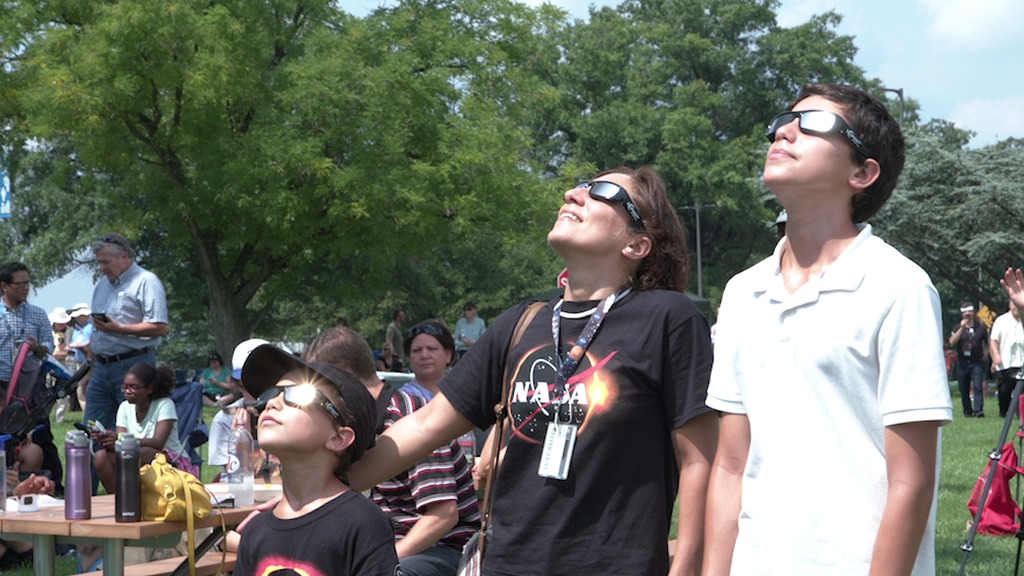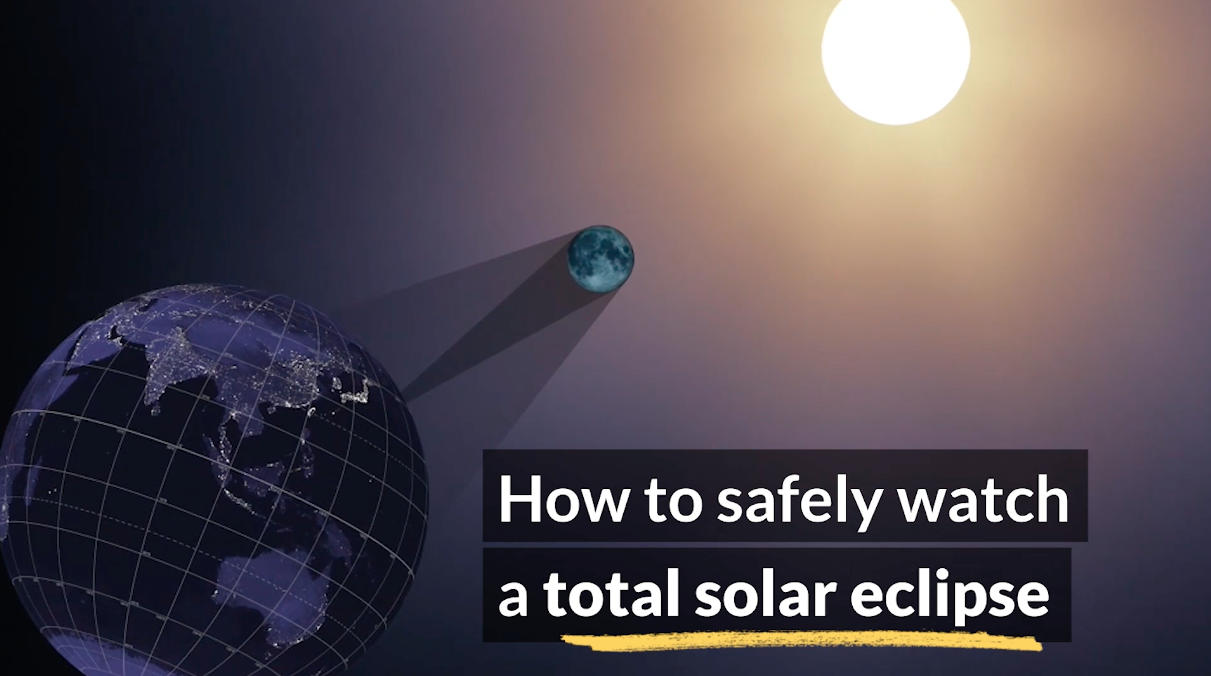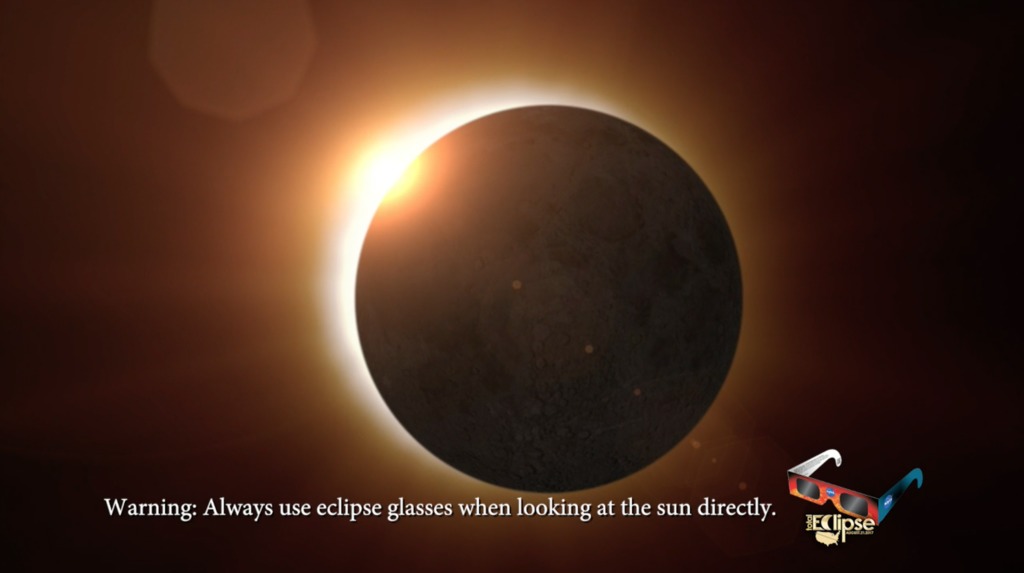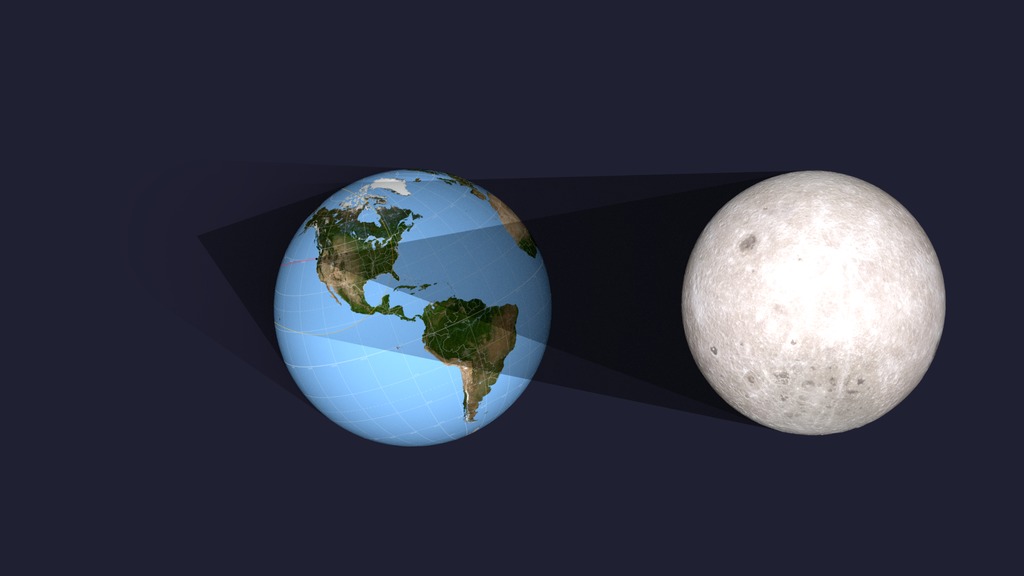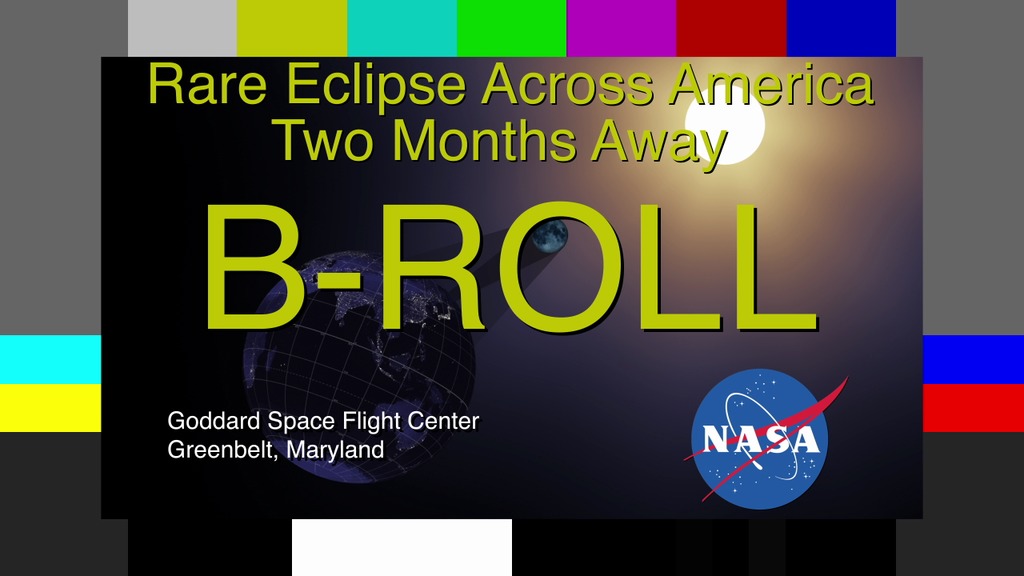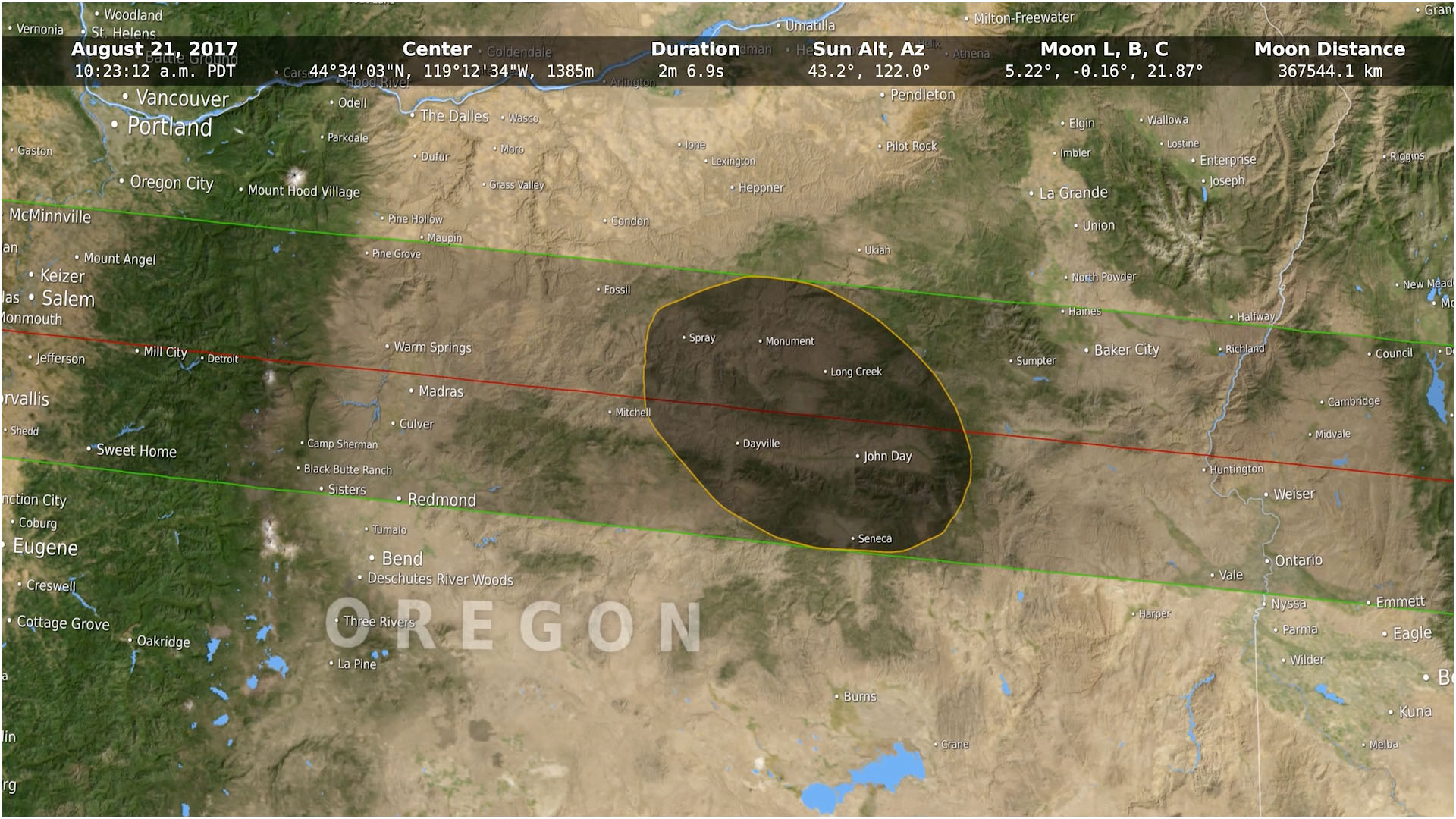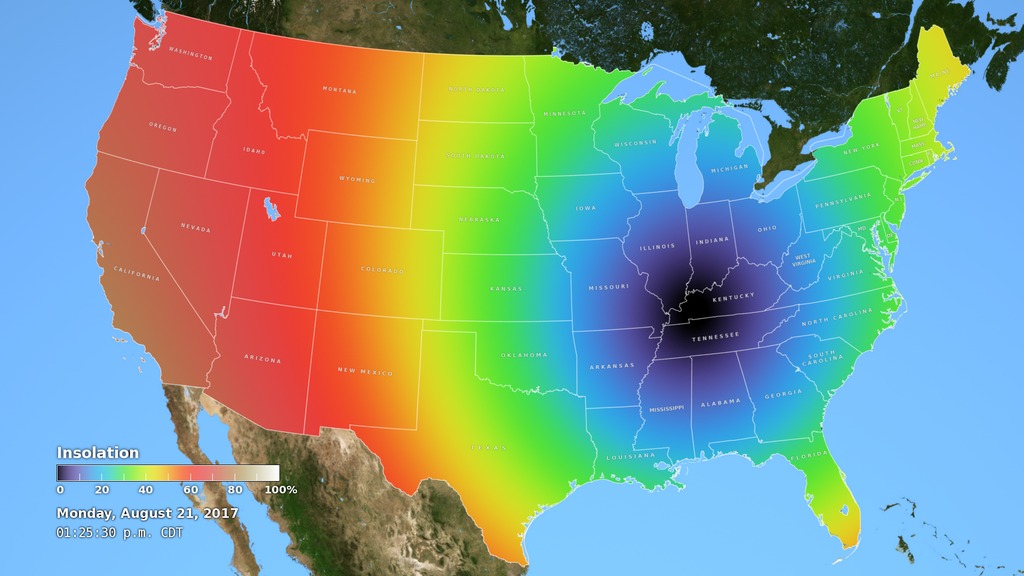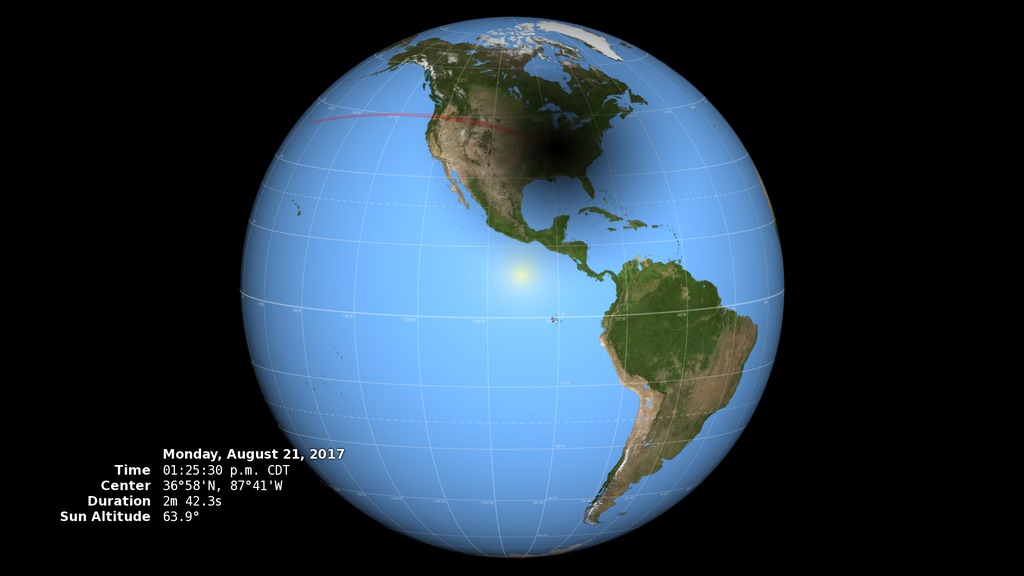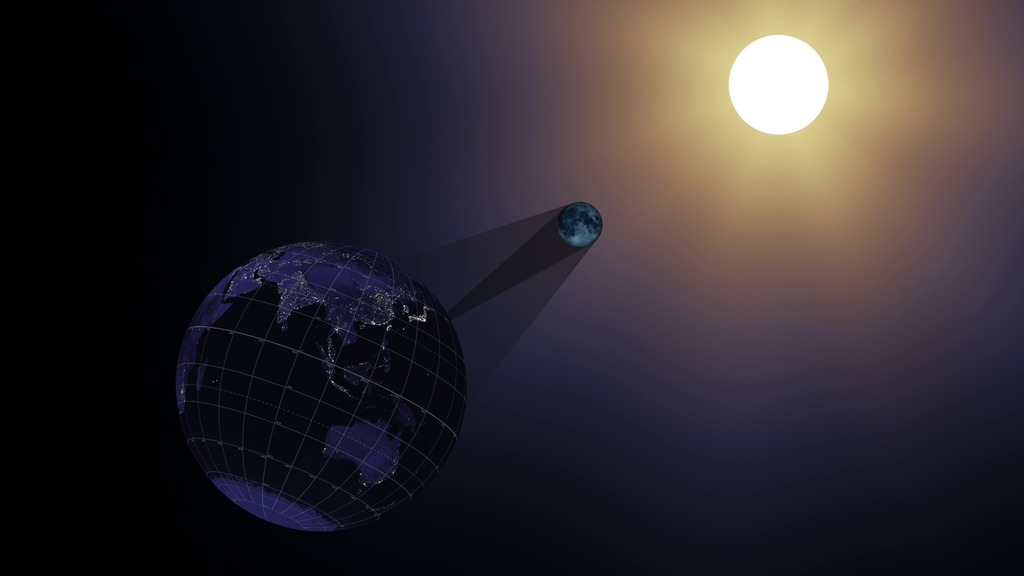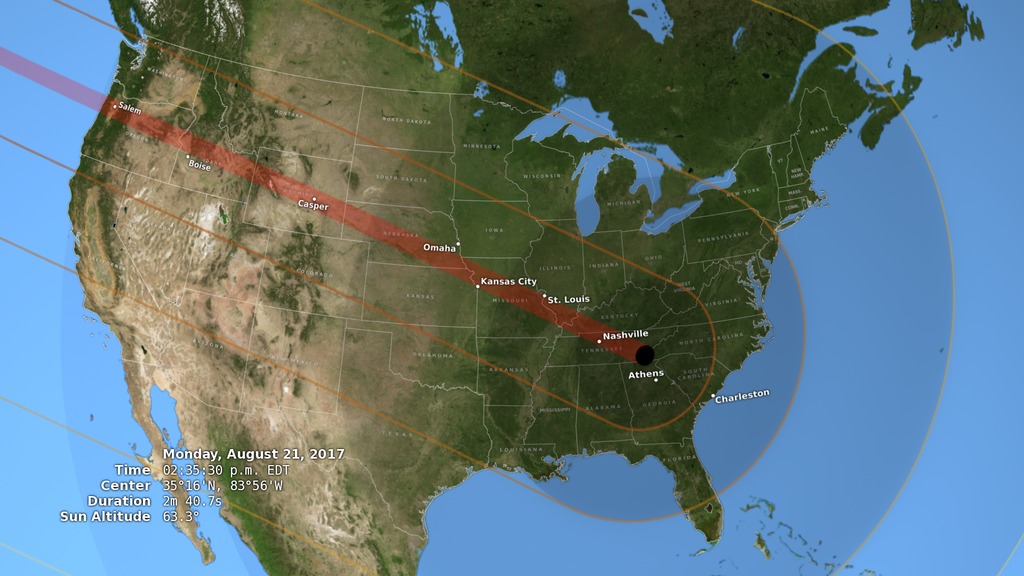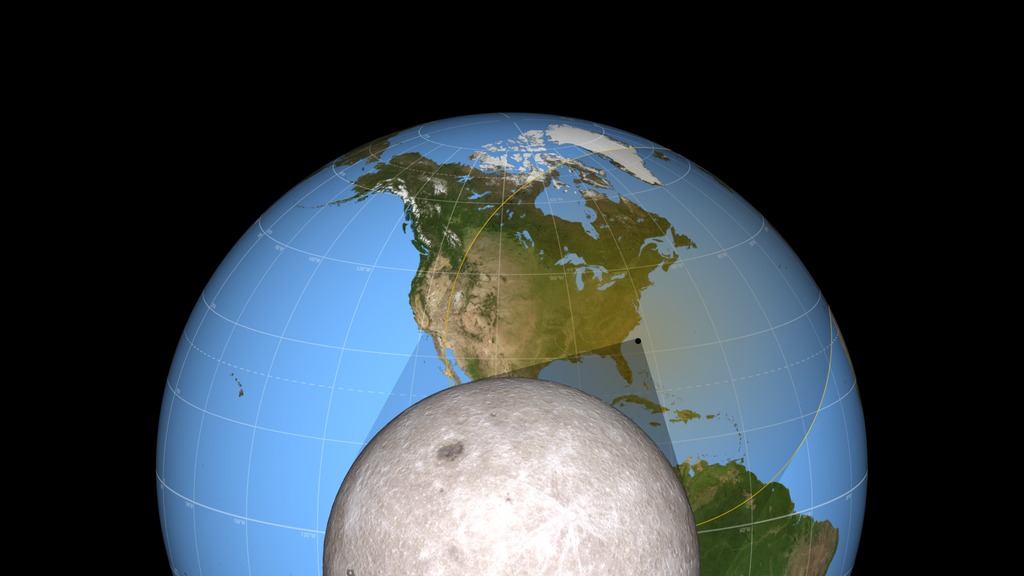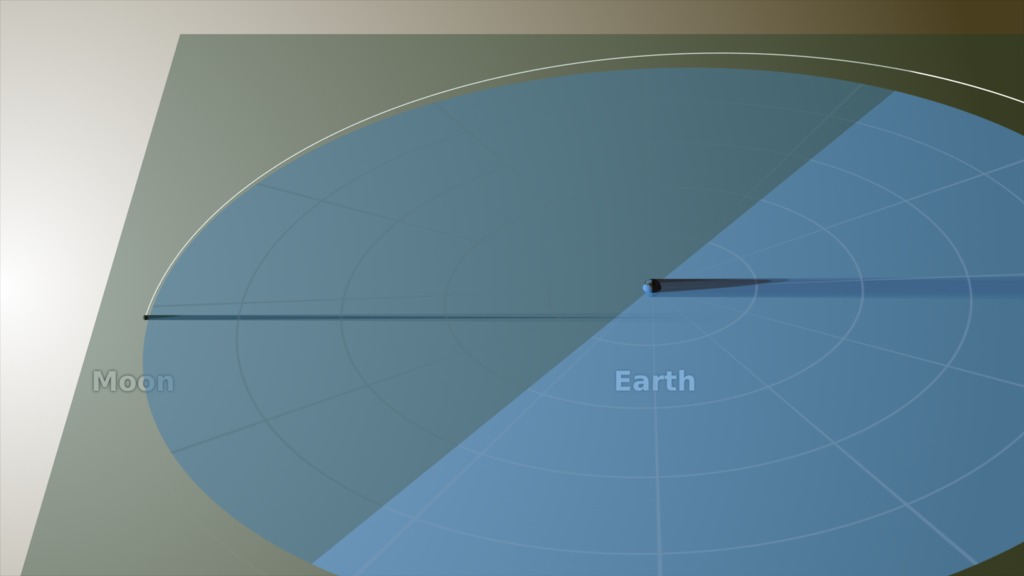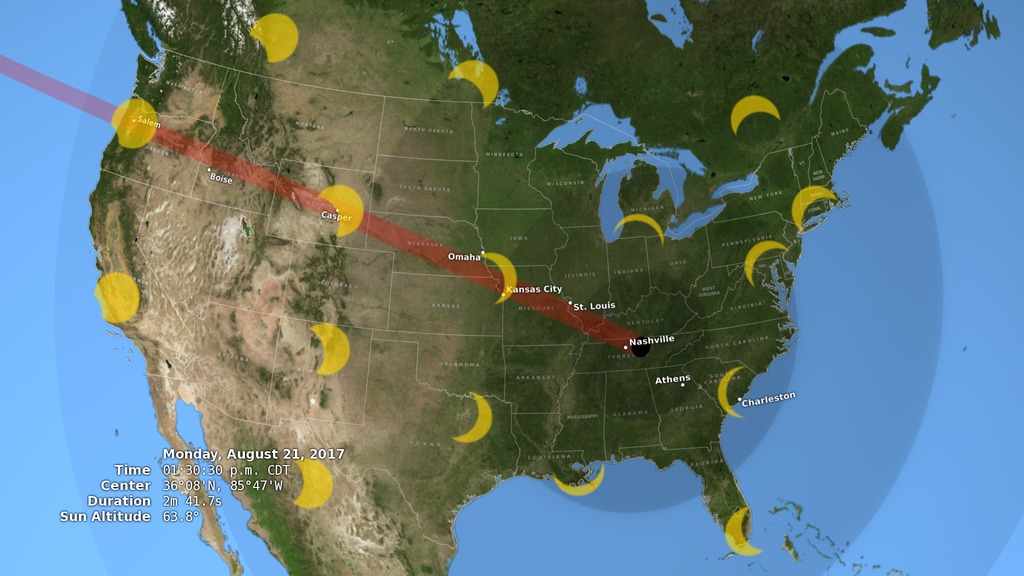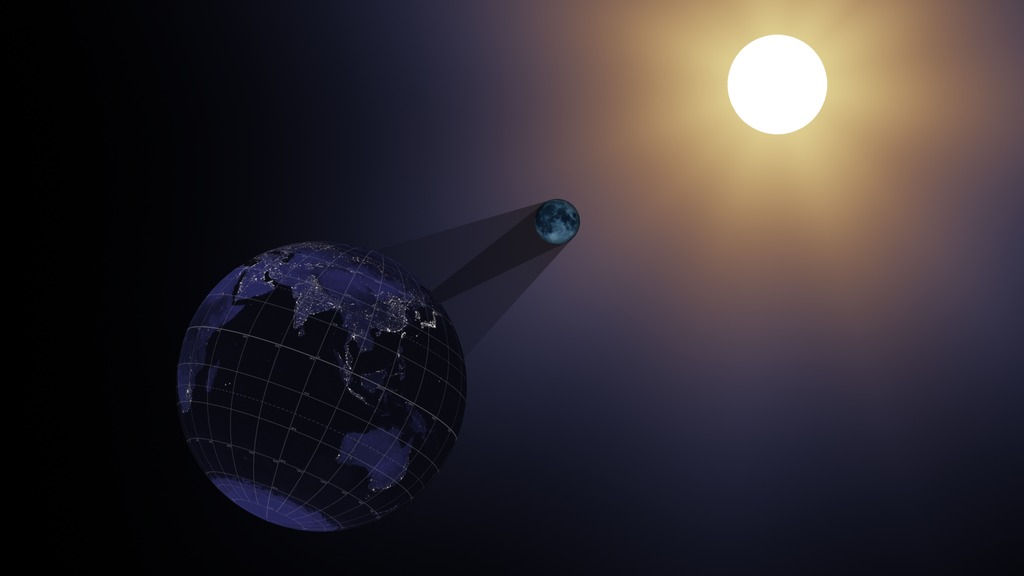2017 Eclipse: Earth, Moon and Sun
The Moon moves right to left in its orbit around the Earth. The shadow it casts hits the Earth during the August 21, 2017 total solar eclipse.
A solar eclipse occurs when the Moon passes between the Sun and the Earth, casting its shadow on the Earth. The shadow comprises two concentric cones called the umbra and the penumbra. Observers on the Earth who are within the smaller, central umbra see the Sun completely blocked. Within the larger penumbra, the Sun is only partially blocked.
In this animation, the Earth, Moon, Sun, and shadow cones are viewed through a telescopic lens on a virtual camera located far behind the Earth. Long focal lengths like the one used here appear to compress the distance between near and far objects. Despite appearances, the geometry of the scene is correct. The Moon's umbra cone is roughly 30 Earth diameters long, barely enough to reach the Earth, while the Sun is almost 400 times farther away.
From this perspective, we see the night sides of both the Earth and the Moon. Solar eclipses can only occur during New Moon, when the entire Earth-facing side of the Moon is experiencing nighttime darkness.

A print-resolution still image showing the Earth, Moon, and Sun at 17:05:40 UTC during the August 21, 2017 eclipse. The image is 12 × 9 inches at 300 DPI.
Credits
Please give credit for this item to:
NASA's Scientific Visualization Studio
-
Visualizer
-
Ernie Wright
(USRA)
-
Ernie Wright
(USRA)
-
Producer
- Kayvon Sharghi (USRA)
Series
This page can be found in the following series:Datasets used
-
DE421 (JPL DE421)
ID: 752Planetary ephemerides
This dataset can be found at: http://ssd.jpl.nasa.gov/?ephemerides#planets
See all pages that use this dataset
Note: While we identify the data sets used on this page, we do not store any further details, nor the data sets themselves on our site.
Release date
This page was originally published on Tuesday, October 20, 2015.
This page was last updated on Sunday, January 5, 2025 at 10:50 PM EST.

